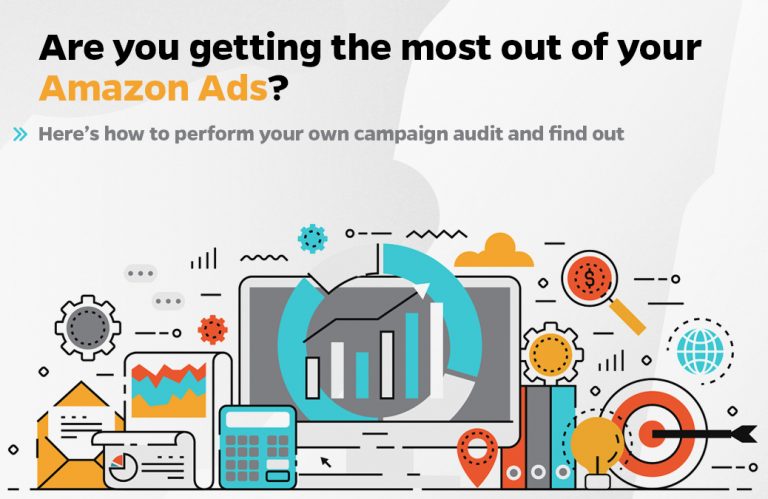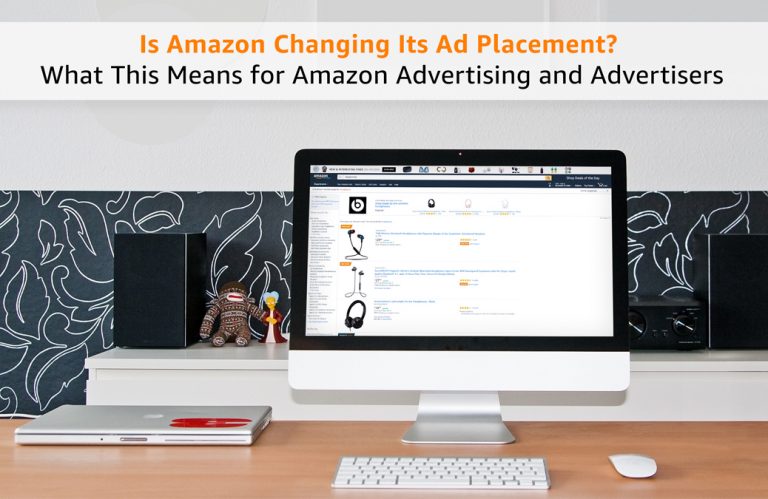

As an Amazon advertiser, it is a critical practice to actively manage your campaigns and audit them frequently for inconsistencies, information regarding which of your products are performing best, and clues surrounding areas of improvement or optimization.
Without this high-touch approach to advertising, your PPC campaigns could be sitting stagnant, using up your budget with little return. If you have Amazon PPC campaigns that have been running for a while without much review, it may be time to take a look at how they are performing.
Follow this simple checklist and assess where your own PPC campaigns may have room to improve.
The Basic Audit: ACoS, Budget and CTS
1. ACoS
Start with ACoS, or Advertising Cost of Sales. The formula for this is ACoS = ad spend / sales. Is your ACoS under the threshold? In order to decide what is a reasonable ACoS for your unique campaign, you first need to calculate your profit margin. Make sure to include every cost to your business such as manufacturing costs, Amazon fees, and even yours and your employees’ salaries if applicable. Unless you are new to the market and using PPC advertising for branding purposes, your ACoS should always be lower than your profit margin.
2. Budget
Next, move on to your budget. Is your campaign exhausting its daily budget? Select three days of the last week to see if the campaign has exceeded its budget in any of those three days.
Day 1


Day 2


Day 3


From this example, we can see that our first campaign is running smoothly, but the second campaign has been having some budget issues. When this happens, it means the ads in your campaign are missing out their potential views and clicks because once you’ve exceeded your budget for the day, your campaigns are paused.
Your next step would be to check data for the previous 30 days. If your ACoS for this campaign is under its threshold, then it is advisable to increase your daily budget by 20%. If the ACoS is over the threshold, then it is time to dig a little deeper to determine why your budget is being exhausted.
3. Click Through Rate:
Now is the time to check your CTR or Click Through Rate. CTR indicates how relevant your keywords are to the product at hand. If the CTR of any one product is less than 0.1%, you might want to double check how relevant your chosen keywords are to your product. It is also recommended to check the competitiveness of your bidding to ensure your product is visible in prominent placement. If you are in Seller Central, check out your Placement Report to gain better insight about your campaign’s CTR.


More in Depth: Search Term Report
Once you’ve completed a basic audit of your campaigns and have gained some insight into their performance, you can now move into a more in-depth audit by taking a look at your Search Term Report.
Organize the report in descending order, by Clicks. Look for keywords and search terms that generated the most clicks but did not generate sales. Determine if that search term is actually related to your product. If not, then move that term into the negative keyword list.
If the term is relevant, then review the product description in detail to see if the keyword is being properly showcased throughout your product listing.
Going Even Deeper: The Competition
After you have performed an audit of your own PPC campaigns, the next step is to check out the competition. How are your competitors performing and what could you be doing to improve your own results?
- Determine who your biggest competitor is and go through their product listings to collect ideas on how to optimize your own product description page.
- Perform a reverse ASIN search to see what keywords are driving sales to your competitor’s listing. There are various tools available like Sellics and Keyword Inspector that will allow you to find this information.
- Look at their reviews to determine what customers like or dislike about the competitive product and bring those important insights back to your own offering.
Auditing your competitors’ listings brings great insight to your own and helps you understand why customers may be purchasing comparable products from different companies.
It can be challenging and often time consuming to actively manage your own PPC efforts on Amazon. Third-party SEM Managers that perform regular audits and lead your campaigns for you are often more accurate and of higher value to your business.











